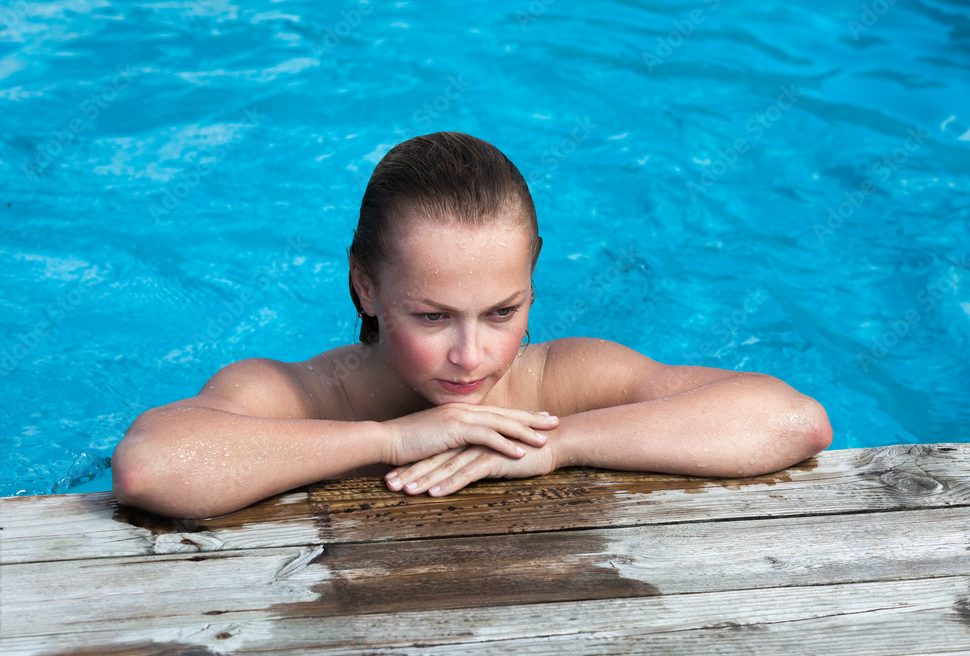Are you ready to go into the pool or hit the beach, but worried about your period getting in the way? Well, fear not, because I have some great news for you! Tampons are here to save the day and allow you to enjoy swimming without any worries. Yes, you heard it right – you can go swimming with tampons!
In this article, we’ll explore why tampons are the perfect choice for swimming, how they provide convenience and peace of mind, and address any concerns you may have.
Contents
Can You Go Swimming with Tampons?

It’s a common concern among women: can swimming while on your period increase your risk of developing a vaginal infection? The good news is that swimming during your period is completely safe and won’t increase your risk of infection. It’s a myth that needs to be debunked once and for all.
While it’s unlikely that you will catch a vaginal infection from simply swimming during your period, there is a slightly increased chance of infection if you opt for wild swimming. Pools with chlorine, on the other hand, might irritate your vagina, potentially leading to a yeast infection or bacterial vaginosis (BV). To reduce this risk, it’s important to take a shower and change into clean, dry clothes as soon as possible after swimming to avoid prolonged exposure to the chemicals.
Does swimming during your period affect your flow?
Some women worry that swimming might stop their flow completely, but that’s not the case. While the water pressure may temporarily slow down your flow, it won’t stop it altogether. Your body will continue to release menstrual blood, just at a slightly slower rate. So, you can confidently swim while on your period without worrying about your flow being impacted.
What feminine care products should you wear while swimming?
If you choose to wear feminine care products while swimming, the experts recommend either tampons or menstrual cups. These products are designed to be worn internally and can securely collect your menstrual blood while you’re in the water.
If you prefer tampons, it’s essential to change them after you get out of the water. Moisture can create a breeding ground for bacteria, so it’s important to keep yourself clean and dry to minimize the risk of infection.
What Type of Tampon Should You Use for Swimming?
1. Regular Tampons
Regular tampons are the standard options available on the market. They are typically made of cotton, rayon, or a combination of the two fibers. These tampons are suitable for swimming and can be used without any issues. While they may absorb a small amount of water, they will still be absorbent enough to collect your flow effectively. It is essential to insert the tampon before entering the water and to change it shortly after swimming to prevent any discomfort or leaks.
2. Tampons Specifically Designed for Swimming
If you want added assurance while swimming on your period, you may consider using tampons specifically designed for swimming. These tampons are made with a coating to repel water, ensuring that they do not absorb as much water as regular tampons. This feature helps maintain their absorbency, making them suitable for swimming.
Tips for Swimming with Tampons

1. Choose the Right Absorbency Level
When it comes to swimming with tampons, it’s important to choose the right absorbency level for your flow. This will ensure that your tampon can effectively absorb both menstrual blood and any water that may enter your vagina while swimming.
2. Insert the Tampon Correctly
Proper insertion of a tampon is key to ensuring comfort and effective protection while swimming. If you have trouble inserting a tampon or experience discomfort, consider trying different tampons with varying absorbencies or using a tampon insertion aid.
3. Change Tampons Regularly
To maintain hygiene and minimize the risk of leaks or infection, it’s important to change your tampon regularly while swimming.
What if you leak blood into the water anyways
Even if you’re wearing a tampon, there’s a possibility that you may still experience leaks while swimming. While it’s normal to be concerned about this, it’s important to remember that any small leakage of blood would be quickly diluted by the water and is unlikely to be seen by others. So, there’s no need to worry too much about it.
Swimming pools are typically chlorinated, which helps maintain hygiene and protect swimmers from any potential issues. The chlorine in the water helps to disinfect and prevent the spread of bacteria. Therefore, even if there is a minor leak, the chlorine in the pool water will work to neutralize and eliminate any potential hygiene concerns.
Conclusion
So, don’t let your period hold you back from enjoying the water. Grab your swimsuit, insert a tampon correctly, and dive right in. Swimming with tampons is safe, hygienic, and will not increase your chances of being eaten by sharks. Embrace your period and make the most of your time in the water!
Frequently Asked Questions
How often should I change my tampon when swimming?
Change your tampon at least every four to eight hours or as often as your physician recommends.
Can you swim with just period swimwear?
Yes, period swimwear works for heavy flow. It can hold 2 tampons worth of flow or equivalent of urine. If you have a particularly heavy flow, consider wearing it for less time or have a backup like a menstrual cup.
Will period blood show in the pool?
No, even if you’re free-flowing into the pool for hours, the water won’t turn into the Red Sea. Even a whole pool full of people on their periods wouldn’t give the water a pink tinge.
I am a medical student with experience and interest in Women’s health and well-being.